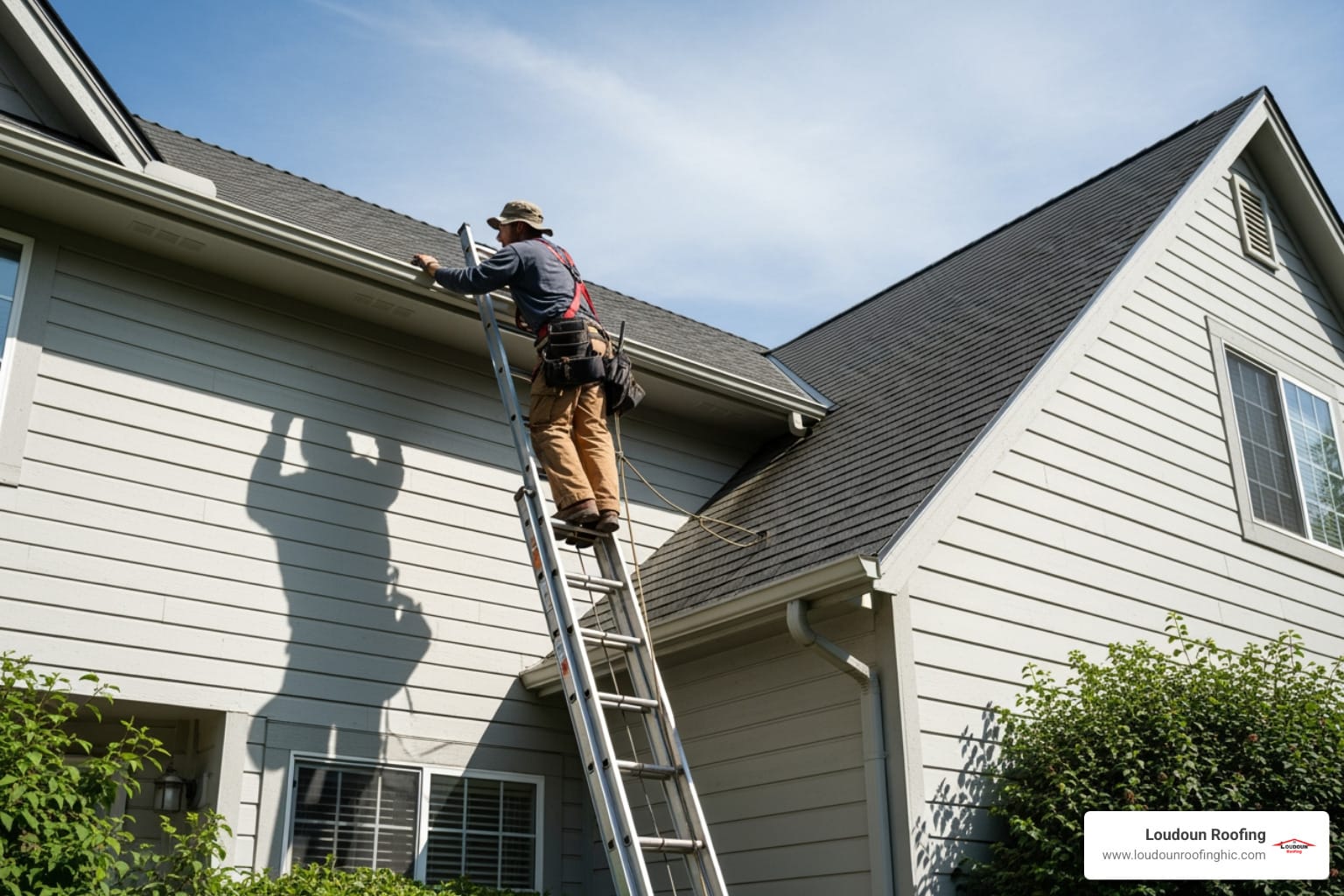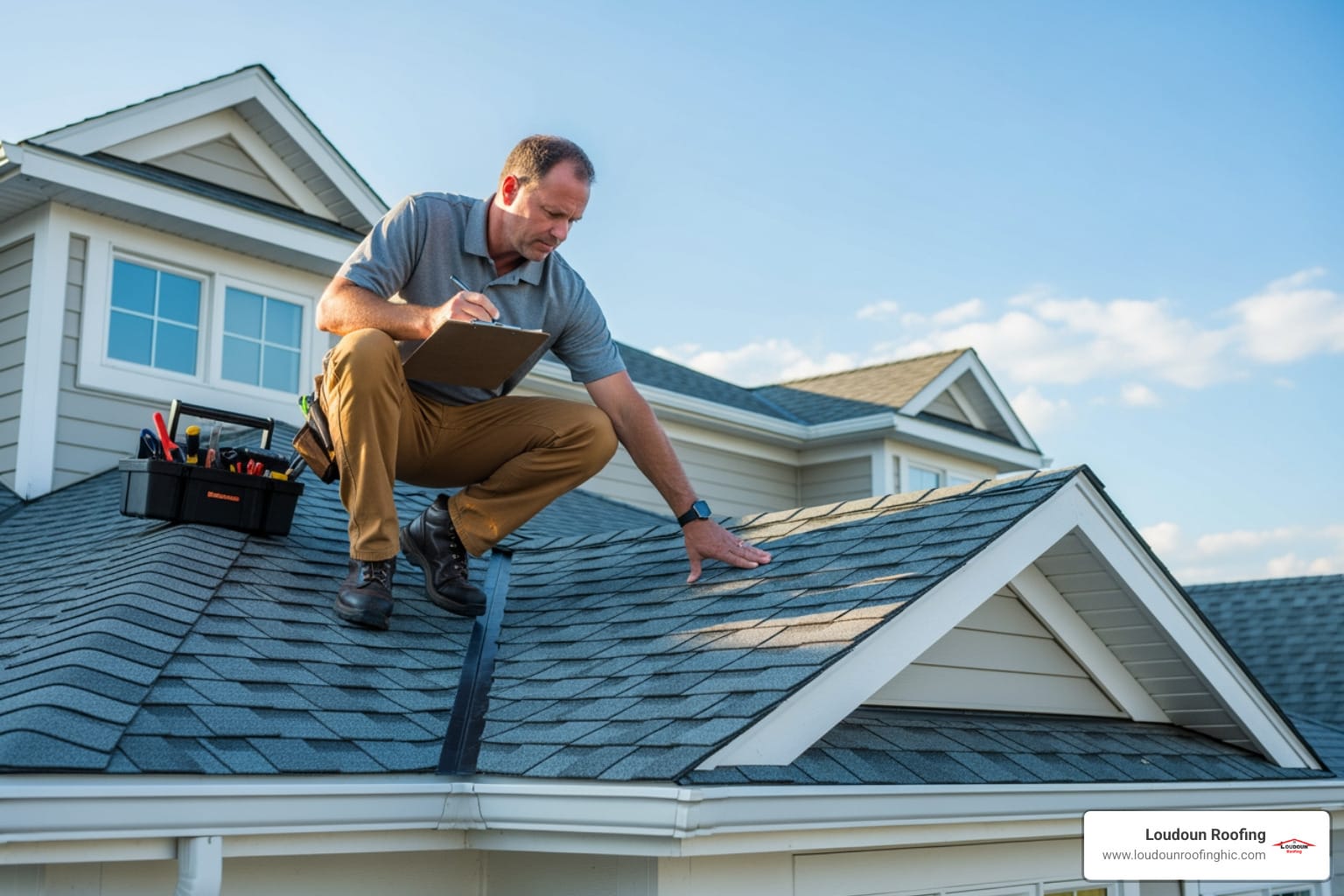Why Multi-Family Roofing is a Different Ballgame
Does your multi family building need roof repair? For property managers and HOA boards, this question carries significant weight. Obvious signs like water stains or sagging roof areas are immediate red flags, but the challenges of multi-family roofing run deeper.
Unlike single-family homes, you’re dealing with multiple stakeholders—from HOA boards to property managers to dozens of tenants. The scale is massive, the liability is higher, and the consequences of neglect affect entire communities. Multi-family properties often feature complex systems with numerous roof penetrations, shared HVAC equipment, and stringent building codes. When problems arise, they can impact multiple units simultaneously, making swift action critical. Professional expert roofing solutions are essential for managing these larger, more complex roofing systems.
I’m Esteban Marin, and since 2001, I’ve specialized in tackling complex roofing challenges in Northern Virginia. My team has extensive experience helping property managers answer the question, “does your multi family building need roof repair?” through comprehensive inspections, ensuring every project gets the specialized attention it demands.
10 Telltale Signs Your Multi-Family Roof Needs Attention
When you’re responsible for a multi-family property, the question “does your multi family building need roof repair” is a serious one. A failing roof can trigger a cascade of problems affecting multiple units, tenants, and your bottom line. Fortunately, your roof usually provides warning signs before a catastrophe.
Here are the key signs that demand your attention:
-
Leaks and Water Stains: Tenant calls about water spots on ceilings or walls are a direct cry for help from your roof. What starts as a small drip can quickly escalate.
-
Visible Shingle Damage: From the ground, look for missing, cracked, or curling shingles. These are clear signs that the roof’s primary defense is weakening and vulnerable to wind and water.
-
Interior Mold or Mildew: A musty smell in common areas or units often points to hidden water intrusion. This is a health hazard that can create serious liability issues.
-
Damaged Flashing: The metal strips around chimneys, vents, and skylights are critical. If they are corroded, bent, or loose, water can easily find its way inside.
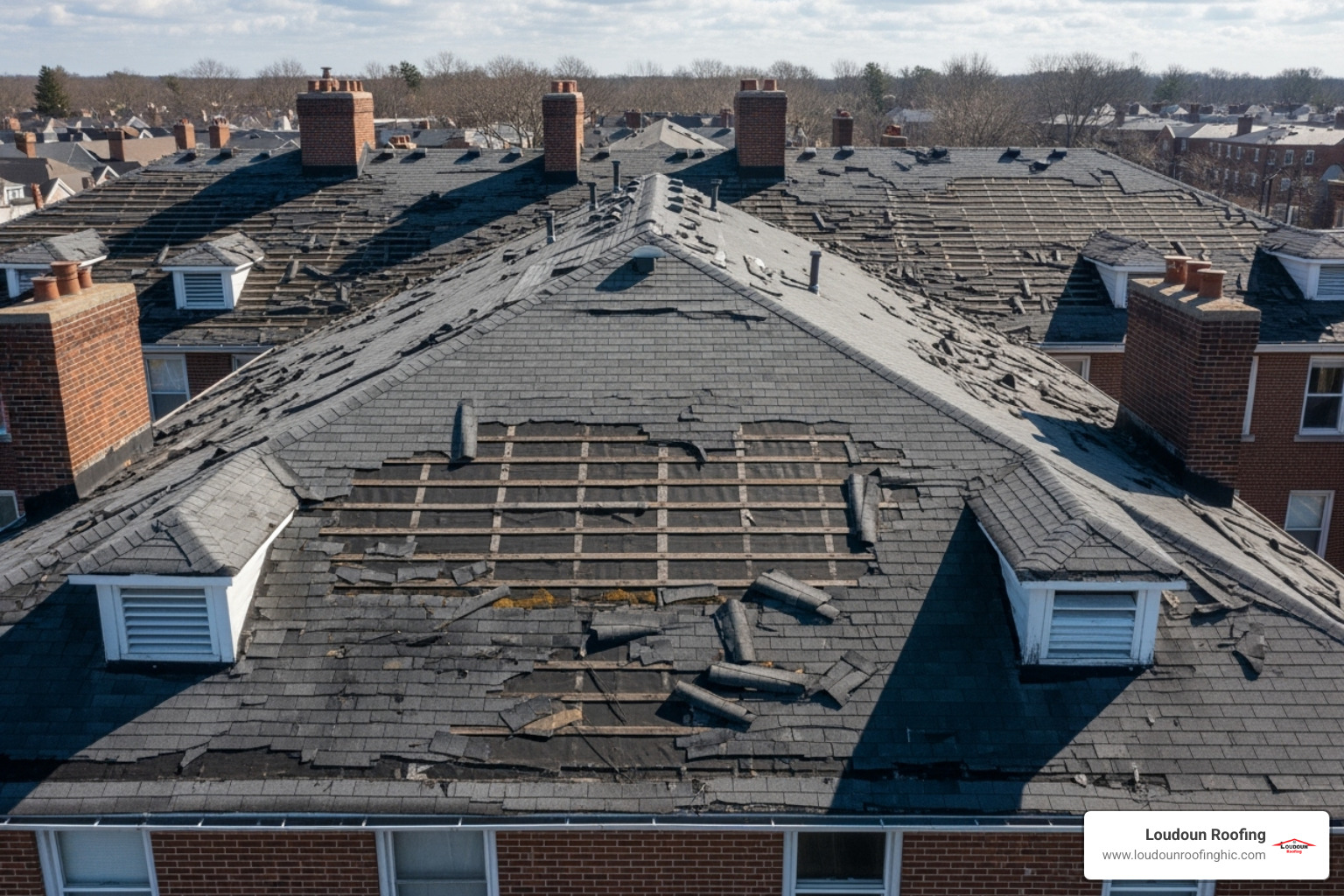
-
Ponding Water: On flat or low-slope roofs, water that sits for more than 48 hours after rain indicates a drainage problem that can damage materials and stress the building’s structure.
-
Higher Energy Bills: Unexplained spikes in utility costs across multiple units can mean your roof’s thermal envelope is compromised, forcing HVAC systems to work overtime.
-
Sagging Roof Deck: Soft spots or visible sagging are emergencies. This indicates potential structural damage from water saturation and requires immediate professional assessment.
-
Clogged Gutters and Granule Loss: Overflowing gutters can damage your roof, fascia, and foundation. If you find excessive shingle granules in the gutters, it means your shingles are aging and losing their protective layer.
-
Bubbling or Blistering: On flat roofs, bubbles or blisters indicate trapped moisture. These weak spots are prone to rupturing and causing leaks.
-
Roof Age: Even without obvious damage, a roof nearing the end of its expected lifespan needs a professional evaluation. Don’t wait for problems to appear.
Acting on these signs can save you thousands. Weather events can worsen existing problems, so it’s wise to consult a guide to identifying storm damage after severe weather. If you see signs of leaks, it’s crucial to seek professional leak repair to address hidden dangers before they spread.
Does Your Multi-Family Building Need Roof Repair? Key Factors to Consider
Determining if your multi family building needs roof repair requires looking beyond a few missing shingles. Key factors like roof age, materials, installation quality, and local climate all contribute to the big picture.
Understanding these factors helps you make smarter decisions about repairs versus replacement and allows you to budget effectively for future needs.
Understanding Your Roof’s Lifespan and Materials
Each roofing material has a different lifespan. Asphalt shingles, common on multi-family buildings, typically last 20 to 40 years. TPO roofing for flat roofs offers 15 to 20 years of protection. For greater longevity, metal roofing can last 35 to 70 years, while slate and tile roofs can endure for 70 to 120 years.
| Material Type | Typical Lifespan (Years) |
|---|---|
| TPO | 15 – 20 |
| Asphalt Shingles | 20 – 40 |
| Metal Roofing | 35 – 70 |
| Slate and Tile | 70 – 120 |
To determine your roof’s age, check building records, speak with maintenance staff, or look for permit dates.
How Installation, Ventilation, and Climate Affect Your Roof
Even the best materials can fail prematurely due to poor installation, which can cut a roof’s lifespan in half. Proper ventilation is also crucial. Without it, trapped summer heat can bake shingles, and winter moisture can create destructive ice dams.
In Loudoun County, our weather—with its hot summers, freezing winters, and sudden storms—accelerates wear and tear on roofing materials. This constant expansion and contraction takes a toll.
According to the National Roofing Contractors Association, proper ventilation and insulation are critical factors in maintaining roof integrity and energy efficiency. A poorly performing roof leads to higher HVAC usage and increased utility bills.
If your roof is aging or you suspect installation issues, it’s time to weigh whether repairs are sufficient or if a full roof replacement is the more economical long-term solution.
The Professional Multi-Family Roof Repair Process: From Inspection to Completion
Once you’ve determined your multi family building needs roof repair, it’s time to engage professionals who understand these complex projects. A systematic approach ensures the process is manageable for property managers, HOAs, and residents.
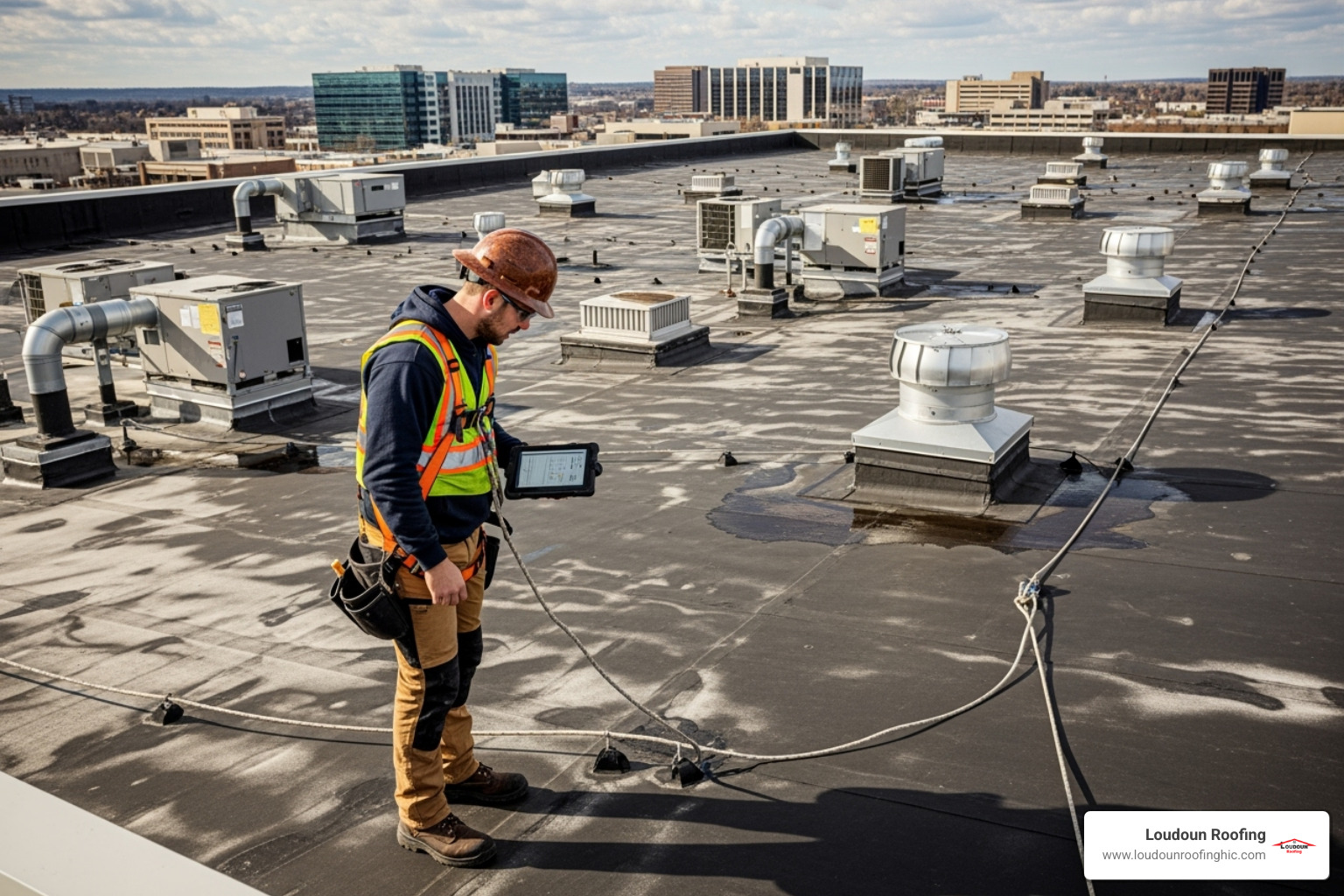
The professional repair process follows a proven sequence: inspection, proposal, and execution, with clear communication at every stage.
Step 1: Comprehensive Inspection and Damage Assessment
A professional Roof Inspection is the first step. We use advanced tools like drone technology for safe, thorough aerial views and thermal imaging to detect hidden moisture trapped beneath the roof surface. We examine all components, from shingles and flashing to interior spaces, to identify visible and underlying issues. The result is a detailed report with photos and clear recommendations.
Step 2: Navigating Proposals, Approvals, and Insurance
We provide clear, detailed estimates outlining the costs and benefits of repair versus replacement. Our proposals are board-ready and transparent, designed for the approval processes of HOAs and property management companies. We also assist with understanding roof insurance claims, helping you steer documentation and communication with your insurer. Project planning includes detailed timelines and schedules to minimize disruption.
Step 3: Execution and Final Sign-Off
Minimizing disruption to residents is our top priority during repairs. We provide clear work calendars and maintain clean, safe work sites that adhere to all OSHA guidelines. We use only quality materials and ensure all work meets or exceeds stringent multi-family building codes to protect your warranty and ensure long-term performance. After a final inspection, we provide comprehensive warranty information. For urgent issues, we also offer emergency roof repair services.
Choosing an experienced contractor means partnering with a team that understands your responsibilities as a property manager or HOA board member.
Proactive Protection: A Guide to Multi-Family Roof Maintenance
The best time to ask “does your multi family building need roof repair” is before the answer becomes an emergency. Proactive roof maintenance is the key to extending your roof’s life, preventing costly damage, and protecting your investment.
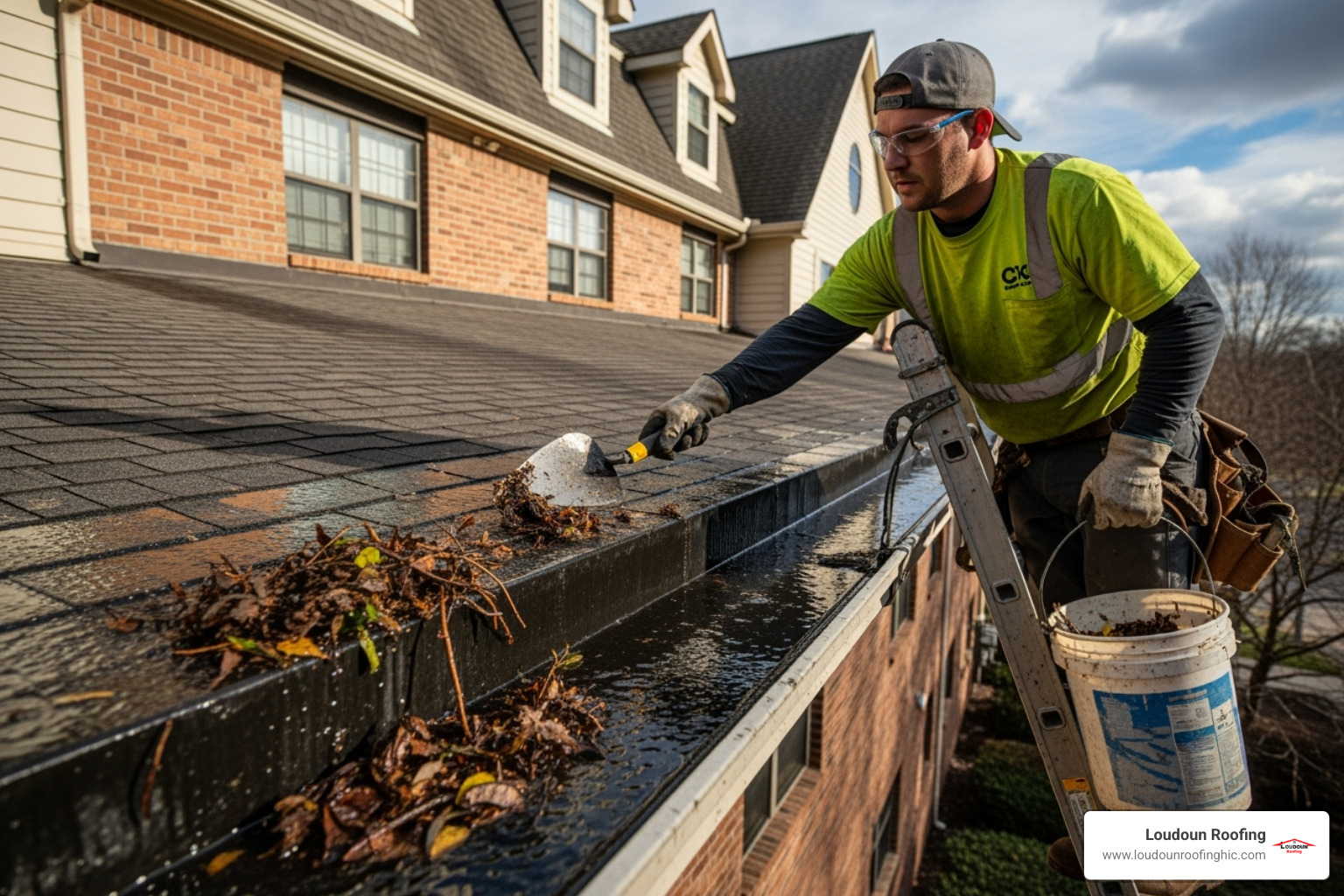
Why Preventative Maintenance is Crucial
Preventative maintenance isn’t an expense; it’s an investment. It delivers significant cost savings by catching small issues before they become major repairs. It also provides asset protection, improves tenant satisfaction, reduces liability, and can dramatically extend your roof’s lifespan. A comprehensive Roofing Maintenance plan is the most effective way to achieve these benefits.
Essential Maintenance Tasks for Property Managers
A consistent, bi-annual maintenance schedule is vital. Key tasks include:
- Debris Removal: Regularly clear leaves and branches that trap moisture and cause rot.
- Gutter and Downspout Cleaning: Ensure proper water flow to prevent backups that can damage the roof, fascia, and foundation.
- Post-Storm Inspections: After high winds or hail, check for immediate damage.
- Tree Management: Trim overhanging branches to prevent debris and physical damage.
- Seal and Flashing Checks: Inspect seals around all roof penetrations (vents, HVAC units) for degradation.
- Ponding Water Checks: On flat roofs, address any areas where water stands for more than 48 hours.
Consider professional services like Professional roof and siding cleaning to remove damaging organic growth like moss and algae. Consistent maintenance transforms roof repair from a crisis into a planned, budgeted decision.
Frequently Asked Questions about Multi-Family Roof Repair
Property managers and HOA boards often have similar questions about their roofs. Here are answers to the most common ones I hear while serving Loudoun County.
How often should a multi-family roof be inspected?
To proactively answer “does your multi family building need roof repair?”, schedule professional inspections at least twice a year (spring and fall) and after any major storm. Due to their size and complexity, multi-family inspections are more extensive than those for single-family homes but are crucial for catching minor issues before they escalate.
Who is responsible for roof repairs in a condo or apartment complex?
In most cases, the Homeowners Association (HOA) or property management company is responsible for the roof, as it’s a common element. Costs are typically covered by HOA fees or special assessments. For rental properties, the landlord is responsible. Always check your specific HOA bylaws or lease agreements to confirm responsibility.
Can we repair just one section of our multi-family roof?
Yes, sectional repairs are often possible for localized damage. A professional Roof Repair contractor can assess if a targeted fix is a viable long-term solution. However, sometimes what appears to be isolated damage is a symptom of a widespread problem, making a full replacement the more cost-effective choice.
Conclusion: Secure Your Investment with Expert Roofing Solutions
Managing a multi-family property is challenging, but your roof shouldn’t be a source of stress. By understanding the warning signs and maintenance needs, you can confidently answer the question: does your multi family building need roof repair?
Multi-family roofing is a high-stakes responsibility. You are safeguarding an entire community and a significant financial investment. Proactive care and professional service are not just best practices—they are essential for protecting your property, ensuring tenant safety, and preserving value.
The importance of professional service cannot be overstated. Multi-family properties demand licensed, insured contractors who understand complex building codes, HOA requirements, and the logistics of working in occupied buildings. This investment delivers long-term value through durable repairs, happier tenants, and fewer emergencies.
Choosing a licensed and insured contractor is your best defense. At Loudoun Roofing, we have provided expert Multi-Family Roofing services to Northern Virginia property managers and HOAs since 2001. Our experience with the unique challenges of our local climate ensures your property is in capable hands.
Don’t wait for a small leak to become a major disaster. Protect your tenants and your investment. For a comprehensive assessment in Loudoun County, contact our team for a Free Roof Estimate. Let’s work together to keep your property secure.


